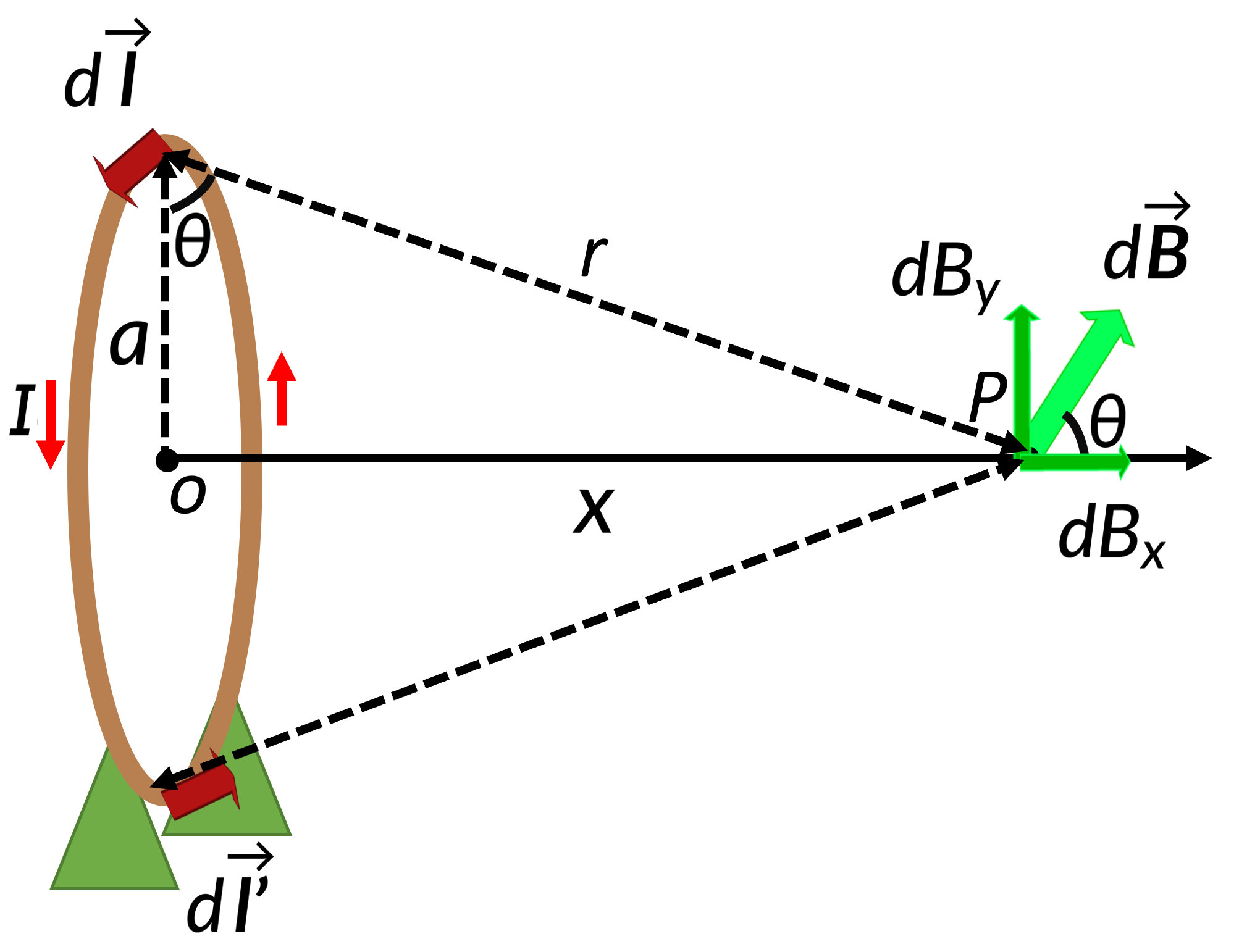29.7:
Magnetic Field Of A Current Loop
Consider a circular current-carrying loop of radius "a". The magnetic field at an axial point at a distance "r" from the loop due to an infinitesimal current element, is given by the Biot-Savart law.
Applying the Pythagorean theorem to the distance r, the components of the magnetic field along the x-axis and the y-axis can be defined.
The perpendicular components of the magnetic field, corresponding to different current elements around the loop, cancel each other. Integrating the parallel components for all the current elements around the loop gives the total magnetic field on the axis of the circular loop.
For a coil of n closely spaced loops, the total field on the axis of circular loops is n times the field due to a single loop. The magnetic field's magnitude is maximum at the center of the coil, and decreases along the axis following the inverse square law.
If this coil is passed through the plane of a slab containing iron filings, the orientation of the iron filings shows the alignment of the magnetic field lines.
29.7:
Magnetic Field Of A Current Loop
Consider a circular loop with a radius a, that carries a current I. The magnetic field due to the current at an arbitrary point P along the axis of the loop can be calculated using the Biot-Savart law.

Let axial point P be a distance x from the center of the loop. The magnetic field at P, produced by an infinitesimal current element dl, is directed at an angle θ. The current element and the unit vector along the line joining P are perpendicular at all points on the loop. Substituting this and rewriting r in terms of x and a gives the magnitude of the magnetic field due to the current element.
The magnetic field can be resolved into two components: perpendicular and parallel to the axis. Due to different current elements around the loop, all the perpendicular components of the magnetic field cancel each other. Integrating all the parallel components over all the current elements along the loop, gives the magnetic field on the axis of a circular loop.
For a coil of n closely spaced loops of the same radius, the total field is n times the field due to a single loop.
Suggested Reading
- OpenStax. (2019). University Physics Vol. 2. [Web version]. Retrieved from 514-516 https://openstax.org/books/university-physics-volume-2/pages/12-4-magnetic-field-of-a-current-loop
